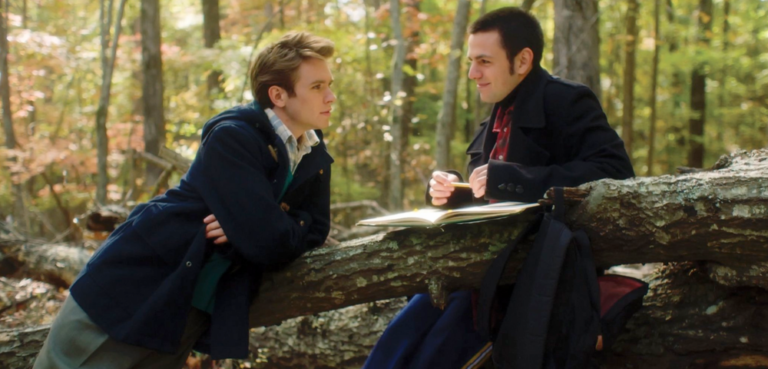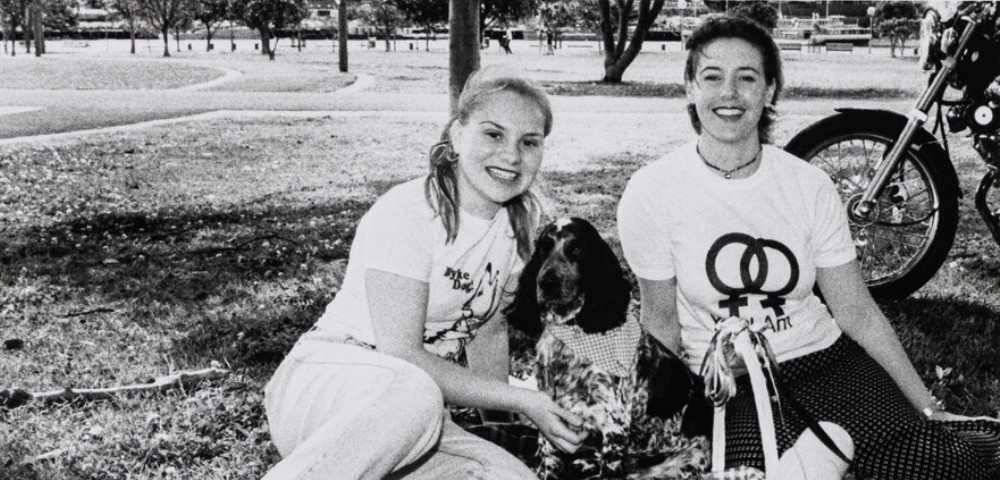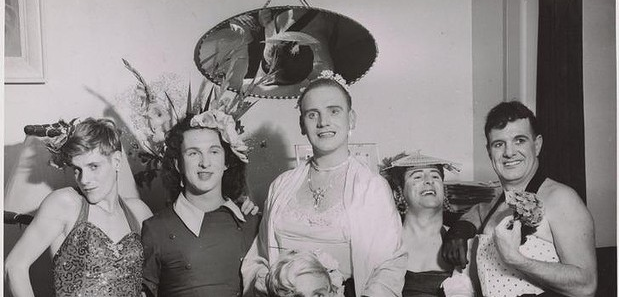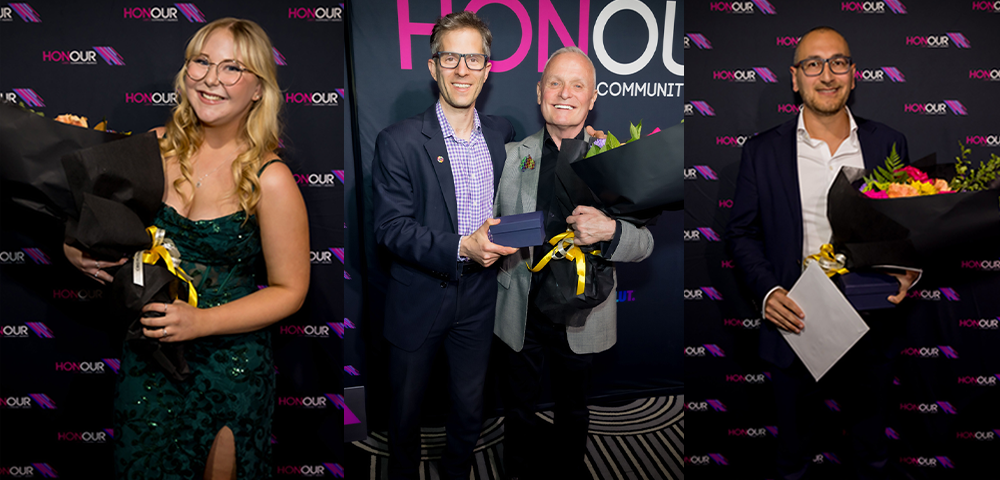
Prahran, Potts Point, Parramatta?

HEADS turned when Liz Waterhouse, her son and her partner moved into a quiet cul-de-sac at South Lake, deep in Perth’s southern suburbs.
“One of my neighbours said, ‘Oh my god — which one of you mows the lawns?’ and it blew her mind it was me because I tend to be the one who wears skirts,” the compliance manager says.
“I have a quarter-acre block, one son, two dogs and four chickens — we’re living the heterosexual suburban dream.
“But I do feel like the only lesbian in the village,” Waterhouse adds.
Ruth Green, the vice president of Parents and Friends of Lesbians and Gays (PLFAG) NSW recalls a similar experience.
“There are some lovely people in Penrith but homosexuality is still seen as something outside the norm,” she says.
“For people my age there is this stereotype that’s still there.”
When Green’s son Michael came out, some of the reactions from neighbours in the western Sydney suburb were unexpected.
“One of our neighbours actually cried,” Green remembers.
“He’d known Michael since he was born and he thought it was a tragedy.
“He said ‘how can Michael be gay, he plays football?’
“Michael lives in Darlinghurst now; I think it’s easier for him.”
Dr Angela Ragusa, a senior lecturer in sociology at Charles Sturt University, understands Michael’s decision.
“Locations outside of Australia’s inner-city (LGBTI) havens present a range of challenges,” she says.
“Access to services get harder to find the further one moves out.
“Factors such as the age of residents, their cultural background, level of ethnic diversity all affect acceptance of those who want to express their (LGBTI) identities.”
For Matthew Edwards, a liquor store manager, the lack of facilities was behind his move closer to the city.
“Growing up there were zero services for gay people out west,” he says.
“Living near the city, everything’s at your fingertips and if you have a drink it’s a $5 cab ride, not $114 to get a cab out to Parramatta.”
And Edwards, originally from Greystanes in western Sydney, certainly isn’t alone in choosing the inner suburbs.
Australian Bureau of Statistics data on same-sex couples paints a picture of LGBTI people congregating in inner city neighbourhoods such as Prahran and Collingwood in Melbourne and Brisbane’s New Farm.
Almost 20 per cent of all couples in Darlinghurst and Potts Point in Sydney are same-sex and it’s estimated that one in 10 of all gay men in Australia live within two kilometres of Taylor Square.
But if you stand among the California bungalows and “McMansions” on the city fringes and listen very carefully, you might just be able to hear the strains of Melissa Etheridge, Kylie Minogue and Lady Gaga.
The numbers are still small. Only 0.4 per cent of couples in Parramatta are gay compared to 8.8 per cent across Sydney’s central suburbs, and 0.3 per cent in Melbourne’s south-west compared to 3.4 per cent in the inner city.
But the numbers are growing. In Blacktown and Sydney’s south-west, LGBTI residents have risen by a quarter, while in south-east Melbourne and Canterbury, numbers have doubled in a decade.
So what’s behind the growing gay diaspora?
And what does it say about the suburbs when, just last year, AFL team the Greater Western Sydney Giants tweeted their support for marriage equality, while the Lord Mayor of Parramatta made national headlines for the wrong reasons after his staff asked an LGBTI youth group to remove their banner from a local festival on the grounds it was deemed offensive?

Christopher Fuller, who works in HR for a major bank, lives in Pakenham, on the eastern cusp of Melbourne.
Early each Saturday morning, he takes his nieces swimming followed by a visit to the local ducks. The day often rounds out with a family barbecue.
While he used to live in South Yarra, Fuller says he began to tire of constant nights out and missed his family.
“Then I moved back and realised how much [the suburbs] have changed. It’s a lot more relaxed,” he says.
Fuller adds he now prefers Pakenham’s “family friendly vibe.”
“My family have kids and I want to be there in their lives and be the cool uncle they go to,” he says.
He cites shows such as Modern Family as helping make LGBTI people more accepted.
Waterhouse says the move from inner-city Perth was a wrench but the family needed more space for a growing child.
“We wanted a shorter commute and a better quality of life and that was always the compromise,” she says.
Several years later and Waterhouse is the very model of a suburban mum, teaching the school choir and a past president of the P&C committee.
Though not a deliberate move, Waterhouse says the fact she “presents as straight,” has helped to be accepted.
So has being upfront about her sexuality: “We have been crystal clear and blunt and it can make it harder for anyone to be obnoxious.”
However, Waterhouse mentions a neighbour who won’t let their children play with her son, while at school, her son has also “started getting stick for having two mums and that makes me unbelievably angry.”
She says she “fitted in a lot better” in the inner suburbs. Edwards agrees.
“I do change the way I act when I’m out west,” he says.
“I wouldn’t dare put my hand on my partner’s knee for fear that someone would see it.”
Despite this, the only place Edwards has experienced homophobia is in the city, a place where he doesn’t change his behaviour.

A 2003 report by the NSW Government found that while LGBTI people generally considered western Sydney to be unsafe, those living in the west found it no more homophobic than elsewhere in Sydney.
However, figures on the geographical spread of homophobic crimes are hard to come by, with the NSW Police telling the Star Observer that as not all incidents are reported it is difficult to determine their extent.
Nevertheless, they confirmed their gay and lesbian liaison officers regularly performed outreach not just in central Sydney but also in Parramatta and Blacktown.
If MPs’ views do indeed reflect those of their constituents, their voting habits in parliament suggest there are still some battles to be fought.
The situation is particularly stark in Sydney where only two out of 19 outer-suburban MPs openly support marriage equality.
A common theme among many is that they might personally support marriage equality but are unwilling to vote for it.
While none of those MPs were willing to go on the record, the Star Observer understands the religious lobby remains influential in many suburban areas and MPs in swinging or marginal seats fear losing the votes of the devout more than those of the LGBTI community.
Australian Marriage Equality national convenor Rodney Croome gives these viewpoints short shrift, pointing to a 2010 poll that found there wasn’t a single electorate where the majority of voters opposed marriage equality.
“When MPs say their electorate opposes marriage equality what I hear is ‘I only listen to those who support the status quo because it is an excuse for me not to change my position’,” Croome says.
However. one suburban MP has managed to support gay marriage and increase his majority.
“People didn’t vote for me to have no opinion,” says Moreton federal Labor MP Graham Perrett, whose electorate covers Brisbane’s southern suburbs.
“I see committed relationships as one of the building blocks of a healthy community so why would society try and stop people from having that opportunity?”
Perrett, who has gay siblings, says he undertook a survey that showed 53 per cent of his electorate were in favour of marriage equality.
And while faith groups continue to try and persuade Perrett to ditch his support for same-sex marriage, leading to what he calls “animated discussions,” they haven’t changed his view.
Gellibrand federal Labor MP Tim Watts says his support of marriage equality was no hindrance to getting elected: “Melbourne’s west has always welcomed diversity and this respect extends to members of our community who are LGBTI.”
However, the reluctance of some parliamentarians hasn’t stopped suburban councils and community organisations from increasing LGBTI services.
Initiatives begun by Tony Briffa, the intersex former mayor of Hobsons Bay City Council, in Melbourne’s south-west, have been continued by current mayor Sandra Wilson.
Community forums have asked how council can better serve the community, and as a result the local government partnered with Midsumma — Melbourne’s LGBTI cultural festival — with a Westandproud project that aims to document the experiences of LGBTI people in the city’s west.
“(LGBTI) initiatives are important because we believe our community members should feel they… can express their sexuality without fear of discrimination or abuse,” Wilson says.
In Sydney, youth organisation Twenty10 and health promotion body ACON partner with existing suburban local groups such as PFLAG, local police and councils.
The weekly Queer Out West radio show provides another outlet while ACON, together with the Parramatta Queer Forum, helps organise the annual Parramatta Pride Picnic.
Organisations are having to innovate to combat the paucity of traditional gay venues.
“We invest a lot of time connecting with people through our online and social media platforms, as it’s a very effective way of engaging people regardless of where they live,” ACON chief executive Nic Parkhill says.
Technology has also helped lessen the isolation of LGBTI people living further away from larger gay communities.
“Technology helps to connect marginalised groups who historically had to rely on infrequent newsletters and bars to meet like-minded individuals,” Dr Ragusa says.
“Communication technologies improve feelings of connection… to others expressing non-mainstream social identities.”
In western gay culture, the suburbs have always featured strongly, says Dr Martin Dines, an English lecturer from London’s Kingston University.
Gay novels in the 50s, he says, would be based in the suburbs to project an air of respectability, while during the AIDS era the suburbs were a retreat from “ravaged urban gay communities.”
However, the most popular gay suburban narrative is the coming-out story.
“Many of these are by authors who moved to the city to be gay; they are thus in part a way of reconnecting with a past time and place that has had to be left behind,” Dines says.
He highlights Beautiful Thing, a love story between two teenage boys from a working-class estate in London, as “one of the most celebrated of all gay suburban stories.”
But Dines adds that the increase in LGBTI people away from the inner city poses a threat to the genre: “As more gay people live openly in the suburbs, the phenomenon becomes less worthy of comment.”
Trent Cooper not only lives in the suburbs, in Sydney’s Sutherland Shire, he also has a job considered by many to be quintessentially suburban.
He says he fell into plumbing after he left school: “When I came out in the construction industry it was tough.
“I got payed out [by colleagues] although it was never really to put me down,” remarks Cooper, who highlights he gives as good as he gets and feels comfortable at work.
However, when he’s with gay people “there is always a cheeky remark associating plumbing and pipes.”
Like Fuller and Waterhouse, Cooper spent time in the inner suburbs but eventually rejected them to be closer to family and because “city life, as much as I love it, is always go go go.”
Housing costs, the frenetic pace and lack of space are pushing gay people out of the city. Changing attitudes and understanding families are welcoming them to the suburbs.
But it doesn’t change Edwards’ view: “I don’t see myself moving back to the suburbs and it comes back to having those services. Everything I need or want to do is in the city.”
Yet Green says gay people are becoming less of a novelty in Penrith and other suburbs: “I’ve known couples who have set up home in the west and been quite happy and accepted.”
Besides, she says, fitting in needn’t be that difficult: “Once people know you mow your lawns and put your bins out, no one seems to be bothered.”










Penrith has been no problem for any of my family (outside of church communities). There are many many couples obvious to the public without issue. The most homophobic element in Penrith is the lack of support from any of our election candidates in the past two elections. Fiona Scott you are a disgrace.
We moved where we could pay off our home as quickly as possible and to get a large home in Adelaide’s north-eastern suburbs. Views to the Hills close-by, the city centre and to the coast. Neighbours fine, all keep to themselves. Every retail conveniences and only 30 mins drive into the city centre plus wonderful public transport (guided bus-way)
After coming out in rural NSW in a country town with a population of 300 and facing isolation, discrimination, homophobic attitudes and physical abuse from the local community, I felt it was time I moved to a place where I could be happier. I decided on the Blue Mountains until I could get myself settled. After living in the Blue Mountains for 4 years I decided to move to Penrith as it was closer to work and close enough to my family.
I’ve lived in Western Sydney (Penrith) for 10+ years now and I have found it to be a nice area to live. I’ve never once have had issues with the people and my sexuality and I find that they are very accepting of myself. My neighbours have always been obliging and very friendly to myself and my partner. We’ve even been invited to dinners and special events regularly and always get introduced as a couple. They were even very supportive when my 12yr relationship fell apart.
A lot of people have a stigma about the Western Suburbs of Sydney that is so far from the truth. I work in the city and for me city life isn’t what it’s all it’s made out to be. It’s very busy and overwhelming. I feel out of place on Oxford Street and in Newtown and I fell they aren’t for me. I really enjoy living in Western Sydney and feel very at home here. I’m proud to call Penrith Home.